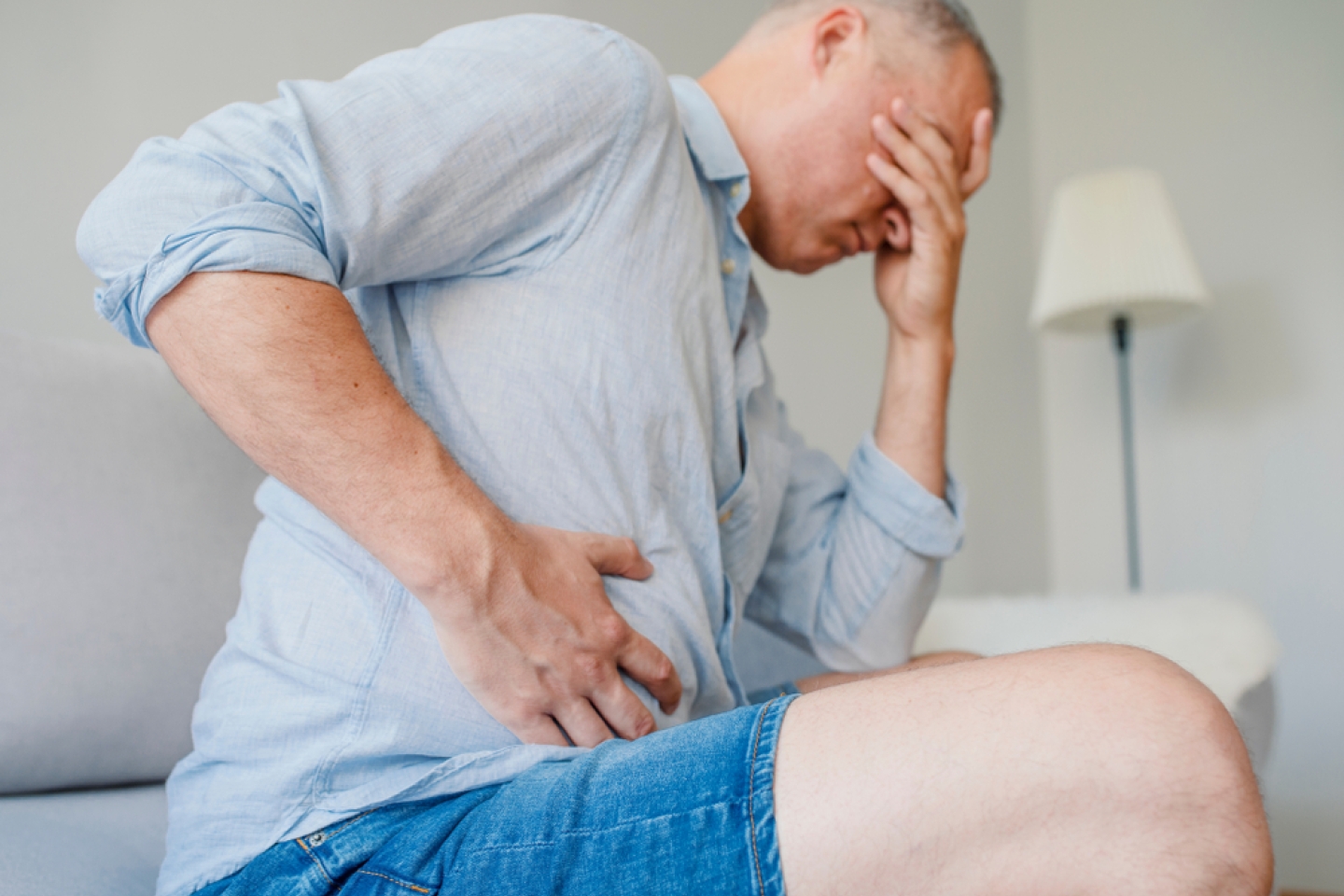
The following is the first of two articles. Stay tuned for part 2, which will focus on surgical treatment for diverticulitis.
--
Diverticulitis is a big word, given the condition it denotes: inflammation in a small pouch that may form in the lower part of the colon. Such pouches, called diverticula, are not exactly normal, but they’re quite common, especially in older adults.
According to the National Institute of Diabetes and Digestive and Kidney Diseases (NIDDK), more than 30 percent of U.S. adults between the ages of 50 and 59 and more than 70 percent of those older than 80 have diverticulosis—pouches or sacs that push outward through weak spots in the colon. Diverticulosis is typically found during a screening colonoscopy.
“Diverticulosis usually develops in the sigmoid colon in people from Western countries,” says Dr. Evan Grossman, an Associate Professor of Clinical Medicine and Associate Attending Physician specializing in gastroenterology at Weill Cornell Medicine. “For reasons that are not well understood, the condition is usually found in the right colon in patients from Asian countries.”
But -osis isn’t the same as -itis. Diverticula can become inflamed or infected, leading to the acute condition known as diverticulitis. Most patients with diverticulosis have no symptoms, and they won’t experience any over their lifetime.
However, fewer than 5 percent of those with diverticulosis develop diverticulitis.
In the U.S. and other Western countries, people with diverticulitis typically experience acute pain in the lower left quadrant of the abdomen. They will often have a fever and an elevated white blood cell count.
“Most cases of diverticulitis are considered simple and are treated with a course of antibiotics,” says Dr. Grossman. “Only about 5 percent of patients with acute diverticulitis develop complicated diverticulitis, which includes the added development of an abscess, fistula, obstruction, perforation or, at worst, sepsis. Patients with complicated diverticulitis may need additional therapies beyond antibiotics, including surgery.”
The exact cause of diverticulosis is not clear, he says. “Historically,” he explains, “it was thought that a low-fiber diet led to small, hard stools and increased pressure from constipation and straining, leading to the development of diverticula.
“But the cause is probably a lot more complicated,” he continues. “Diverticulosis is now believed to be linked to abnormal motility of the colon, along with the development of structural changes in the colon wall as people age. As for diverticulitis, newer theories suggest that changes in a person’s microbiome and chronic inflammation may cause the condition.”
Limited data are available regarding the role of diet in diverticular disease. Dr. Grossman cites a study showing that red meat intake, particularly processed red meat, was associated with an increased risk of diverticulitis. That risk was seen to plateau with 5 servings of meat per week.
A high-fiber diet has been associated with a lower risk of diverticulitis. One study showed that fiber from fruit (such as apples, pears and prunes) and cereal fibers lowered the risk of diverticulitis, whereas fiber from vegetables didn’t lower the risk. But other studies have shown that a prudent diet consisting of fruits, vegetables, whole grains, legumes, poultry and fish was associated with a lower incidence of diverticulitis, compared to the traditional Western diet.
“People with diverticulosis used to be told to avoid foods such as seeds, nuts and popcorn,” Dr. Grossman says. “There was concern that these foods would get stuck inside the diverticula and lead to diverticulitis. However, a large study showed that people who ate these foods were not more likely to develop a diverticulitis episode. As a result, people with diverticulosis no longer need to avoid them.”
During a diverticulitis episode, patients are usually advised to follow a clear liquid diet for a few days and gradually phase in solid food. After the episode resolves, patients should adopt a high-fiber diet, he says, and stick to it long-term.
Once a patient has had an episode of acute diverticulitis, they are at increased risk for further episodes.
“The first or second episode is typically the most severe,” he says. “After that, recurrent diverticulitis is not associated with an increased risk of perforation—a hole in the colon—or an abscess—a swollen area containing pus. These complications, when they occur, usually do so during the first or second episode.”
“A fistula—an abnormal connection or tunnel between, for example, the diverticula and another structure such as the bladder, vagina, skin or a different part of the intestine—is a rare complication,” he says, “but unlike other complications, the risk of developing a fistula increases with recurrence.”
Additional complications may include intestinal obstruction, bleeding from the diverticula and peritonitis—a serious abdominal infection.
Any of the above may turn simple diverticulitis into the complicated version.
Once diverticula form, they don’t go away. Adopting a healthy lifestyle, including maintaining a healthy weight, exercising regularly, and not smoking, may help to prevent diverticulitis and diverticular bleeding.
The long and short of it is that the healthier your lifestyle, the lower your risk of diverticulitis. The following measures have been shown to incrementally reduce the risk of diverticulitis in men:
“Acute diverticulitis is usually treated with antibiotics and pain medication as needed,” Dr. Grossman adds. “Most people can be treated at home with oral antibiotics.”
“After the resolution of the first episode of acute diverticulitis, typically in 6 to 8 weeks, a colonoscopy should be performed,” Dr. Grossman says. “Its purpose is to ensure that there is no underlying colon cancer. If a patient has had a good quality colonoscopy within the past year, it does not have to be repeated.”
Patients who have recurrent episodes of diverticulitis don’t need to have a colonoscopy after each episode but rather should follow current screening intervals: normally, every 10 years for people from 45 to 75 years of age.
Stay tuned for the second installment in this series, which will focus on surgery for diverticulitis.
To make an appointment with a gastroenterologist at Weill Cornell Medicine, call 646-962-4463 or visit our website here.